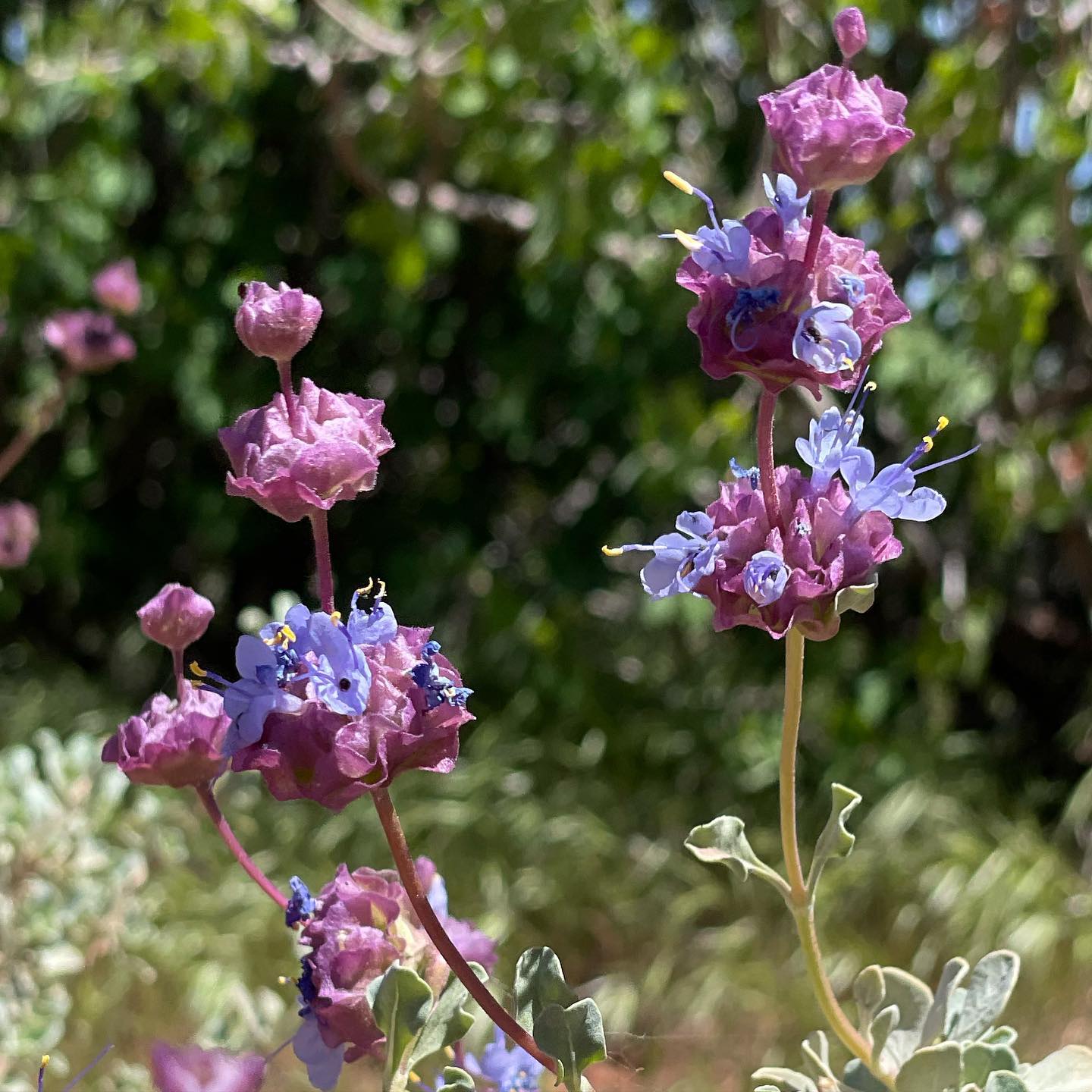Spring in Zion
Spring comes to Zion in stages, starting early in the low deserts and creeping its way up to the alpine meadows slowly over the course of several months. April brings the bright red pops of the Desert Paintbrush, the golden yellow Desert Marigolds, and the vibrant orange stalks of Globemallow. Soon, even the cacti get into the spirit. You can spot the red of the Claret Cup and the violet of the Purple Torch peeking out from the shade of the Pinion Pine. You can find several different species of Prickly Pear showing off white, yellow, coral, and pink flowers. The white flowers of the Datil and Narrow Leaf Yucca grow off stalks several feet above their parent plant, signalling for pollinators from all around.
The hanging gardens tucked into the Navajo Sandstone have many species of flowers that grow nowhere else in the world. The combination of consistent water and shade make it a haven for delicate flowers. Here you will find the bright yellow of the Golden Columbine, and shades of red Western Columbine. The only species of Orchid that grows in Zion, the Helleborine Orchid can be found in the hanging gardens. Also look for the purple Shooting Stars and the scarlet red of the Cardinal Monkeyflower.
Many larger flowering plants grow on the slopes of the mesas. The incredible fragrance of the creamy white Cliff Rose is carried by breezes and can be detected for miles around. The yellow Fremont Mahonia can be seen as lemon yellow bunches dotting the landscape.
The pure white flowers of the Serviceberry give way to edible blue berries in late Summer. Some of the most distinctively shaped flowers in this region are the large yellow feathery stalks of the Prince’s Plume. In these areas you’ll also find Zion’s 8 species of Penstemon. The Palmer Penstemon is most easily identified, with its large white and lavender columns of flowers. The Utah Penstemon is spotted in the underbrush as large red-orange flowers.
As you gain elevation, making your way into the subalpine regions of Zion, you’ll begin to see purple and yellow Asters, the delicate blooms of the Woods Rose, and fields of Lupine.
If you are lucky enough to be in the high elevations just as the snow melts, you’ll find the tiny early blooms of the Manzanita, tiny pink clumps hidden amongst the green leaves.
While all of the flowers in Zion are beautiful, some are best observed from a distance due to their toxic nature. Of these toxic plants, the most well known is probably the Datura, a night blooming trumpet flower, whose pollen is even toxic to humans. Another toxic plant is the Astragalus, commonly known as “Loco Weed”. Certain areas of the park also have high concentrations of the common invasive Silverleaf Nightshade. As in everywhere else, it’s a good idea to not eat any plants you can’t identify!
“Loco Weed”. Certain areas of the park also have high concentrations of the common invasive Silverleaf Nightshade. As in everywhere else, it’s a good idea to not eat any plants you can’t identify!
This is a good field guide to area wildflowers and easily fits in a daypack.
Even in the spring, use common sense while hiking. The temperature may not be triple digits, but you should stay aware of the necessity of staying hydrated. In the spring, 3-5 quarts per day would be a minimum for hikers. Sunscreen and a wide brimmed hat are necessities in the desert sun. Our favorite is the iconic Tilley:
Remember “Leave No Trace Principles” and only leave footprints!


